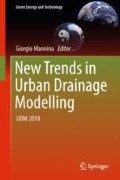Abstract
The ingredients of photosynthetic reactions can be exploited to increase algal culture productivity to effectively treat wastewater by significantly reducing the presence of organic and inorganic compounds. In this study, we introduced microalgae Chlorella pyrenoidosa (C. pyrenoidosa) into four different wastewater samples, including Palm Oil Mill Effluent (POME), piggery, domestic, and mixed-kitchen wastes. The C. pyrenoidosa growth efficacy of POME and subsequent drop in nutrients were demonstrated. It was clearly seen that POME had the highest Chemical Oxygen Demand (COD) values at 700 mg L−1. The Total Nitrogen (TN) ratio for the piggery sample was the highest at 590 mg L−1. Productivity was evaluated in terms of chlorophyll content, growth rate, biomass, and lipid content. POME and domestic wastes had the first and second highest chlorophyll a content of 3 mg L−1 and 2.5 mg L−1, respectively. The optimum growth rate for C. pyrenoidosa was observed when using POME as a substrate. This study confirmed that Cell Dry Weight (CDW) in POME was the highest with 500 mg L−1 after 20 days cultivation of C. pyrenoidosa, when compared to other substrates. Maximum lipid content was recorded for POME, domestic sample, piggery, and mixed-kitchen waste, at 182, 148, 0.99, and 117 mg L−1, respectively. The above results revealed that POME was the best substrate choice for alga C. pyrenoidosa with the highest lipid production rate of the four substrates. It was established that POME (as a nutrient enriched media) assisted C. pyrenoidosa growth and considerably reduced the presence of organic and inorganic compounds.
Access this chapter
Tax calculation will be finalised at checkout
Purchases are for personal use only
References
Ahmad, A.L., Ismail, S., Bhatia, S.: Water recycling from palm oil mill effluent (POME) using membrane technology. Desalination 157(1–3), 87–95 (2003)
Clesceri, L.S., Greenberg, A.E., Trussell, R.R.: Standard Methods for the Examination of Water and Wastewater. American Public Health Association, Washington, DC (1989)
Ji, M.K., Kim, H.C., Sapireddy, V.R., Yun, H.S., Abou-Shanab, R.A., Choi, J., Jeon, B.H.: Simultaneous nutrient removal and lipid production from pretreated piggery wastewater by Chlorella vulgaris YSW-04. Appl. Microbiol. Biotechnol. 97(6), 2701–2710 (2013)
Kamyab, H., Din, M.F.M., Ghoshal, S.K., Lee, C.T., Keyvanfar, A., Bavafa, A.A., Lim, J.S.: Chlorella pyrenoidosa mediated lipid production using Malaysian agricultural wastewater: effects of photon and carbon. Waste Biomass Valorization 7(4), 779–788 (2016)
Kamyab, H., Md Din, M.F., Lee, C.T., Keyvanfar, A., Shafaghat, A., Majid, M.Z.A., Yun, T.X.: Lipid production by microalgae Chlorella pyrenoidosa cultivated in palm oil mill effluent (POME) using hybrid photo bioreactor (HPBR). Desalination Water Treat. 55(13), 3737–3749 (2015)
Li, Y., Chen, Y.F., Chen, P., Min, M., Zhou, W., Martinez, B., Ruan, R.: Characterization of a microalga Chlorella sp. well adapted to highly concentrated municipal wastewater for nutrient removal and biodiesel production. Bioresour. Technol. 102(8), 5138–5144 (2011)
Resdi, R., Lim, J.S., Kamyab, H., Lee, C.T., Hashim, H., Mohamad, N., Ho, W.S.: Review of microalgae growth in palm oil mill effluent for lipid production. Clean Technol. Environ. Policy 18(8), 2347–2361 (2016)
Author information
Authors and Affiliations
Corresponding authors
Editor information
Editors and Affiliations
Rights and permissions
Copyright information
© 2019 Springer Nature Switzerland AG
About this paper
Cite this paper
Kamyab, H. et al. (2019). Microalgae Cultivation Using Various Sources of Organic Substrate for High Lipid Content. In: Mannina, G. (eds) New Trends in Urban Drainage Modelling. UDM 2018. Green Energy and Technology. Springer, Cham. https://doi.org/10.1007/978-3-319-99867-1_154
Download citation
DOI: https://doi.org/10.1007/978-3-319-99867-1_154
Published:
Publisher Name: Springer, Cham
Print ISBN: 978-3-319-99866-4
Online ISBN: 978-3-319-99867-1
eBook Packages: EnergyEnergy (R0)

